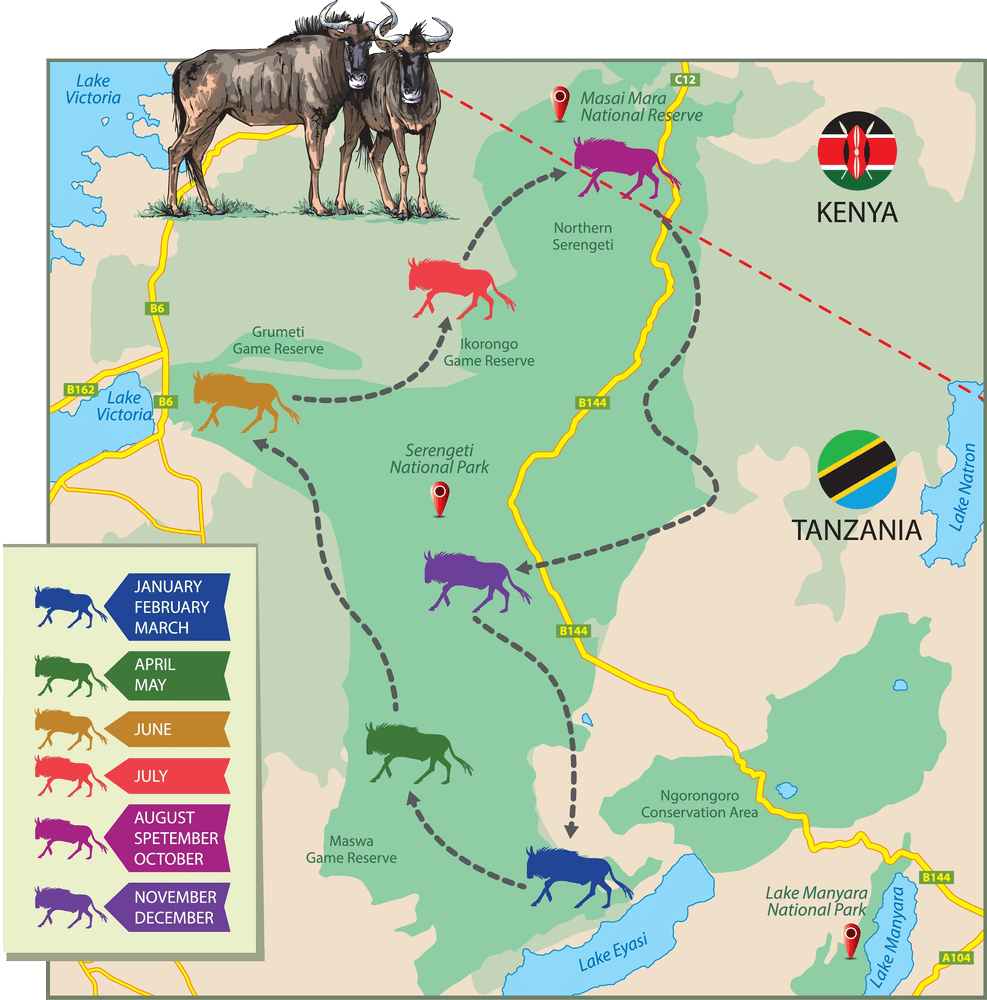
The Great Wildebeest Migration in the Serengeti is the largest movement of wild animals in the world, involving about 1.5 million wildebeests, zebras, elands, and gazelles.
This migration is listed as one of the world’s eight natural wonders and is an exceptional inspiration for a dream nature tour of northern Tanzania.
The migration starts around March and April when the animals leave their calving grounds in the southern Serengeti and head towards the next water source.
They trek via the south-central Seronera outskirts into the Western Corridor and Grumeti River, where they stay until June, before heading to the Masai Mara National Reserve in Kenya around July or August. They return via the same river from October to November and continue back to the southern Ndutu calving grounds, where they arrive around December and reside temporarily until March. The migration attracts a trailing retinue of predators, making it an exciting spectacle for nature enthusiasts.
The best time to witness the great wildebeest migration in Serengeti, Tanzania is generally from June to August when the wildebeest are crossing the Mara River into the Masai Mara National Reserve in Kenya. However, the timing can vary depending on the rains and the location of the herds.
The migration typically starts in January and February when the wildebeest give birth to their young in the southern Serengeti, and they begin to move towards the western and northern parts of the Serengeti in search of fresh grazing.
The migration then heads back towards the south from October to November. Therefore, the best time to witness the migration in Serengeti, Tanzania may depend on which part of the migration you want to witness.
